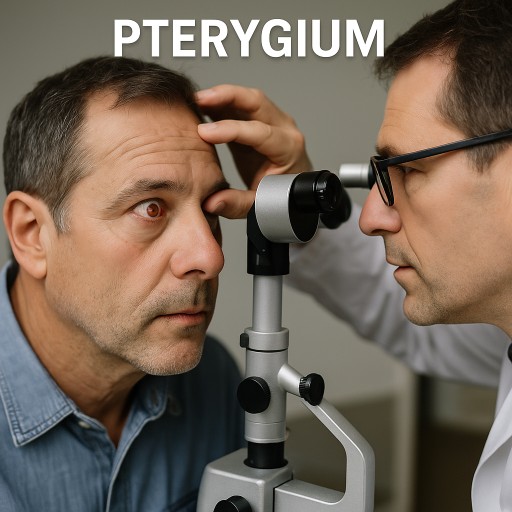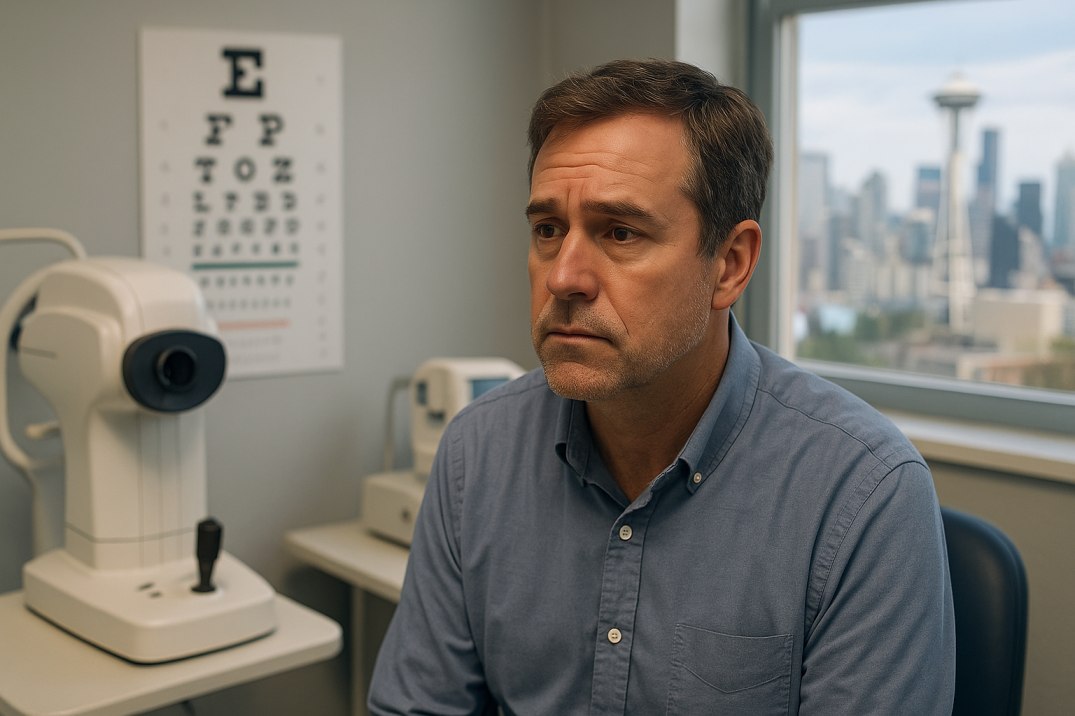Pterygium in Seattle: Causes, Diagnosis & Treatment
Cellular Origins & UV Impact
Pterygium begins at the cellular level with dysfunctional limbal stem cells (LSCs)—essential for corneal health. Chronic UV exposure, a significant concern in sun-drenched Seattle summers, alters these cells, causing abnormal growth into wing-shaped scleral lesions.
Genetic Complexity & Inflammation
-
UV Damage: Triggers DNA harm and oxidative stress, though genetic pathways like p53 protein regulation remain complex
-
Immune Imbalance: Recent studies show heightened Th2 cells and reduced CD8+ T cells in pterygium tissue, creating chronic inflammation
-
Key Drivers: Integrin signaling and extracellular matrix remodeling accelerate invasive growth
Future Treatment Pathways
Understanding these mechanisms helps Seattle researchers develop targeted therapies:
-
Anti-inflammatory drugs to interrupt immune pathways
-
Molecular blockers to halt abnormal cell migration
Reducing recurrence risks beyond traditional surgery for WA patients.
Corneal Distortion & Vision Impact
Pterygium growth pulls horizontally on your cornea—the eye’s clear surface—flattening it and causing “with-the-rule” astigmatism. For Seattle drivers and outdoor enthusiasts, this can mean:
-
Blurred or double vision
-
Glare sensitivity (especially during rainy drives or bright Puget Sound reflections)
-
Reduced night vision
Beyond Correctable Symptoms
When pterygium advances, it creates higher-order aberrations that glasses can’t fix, leading to:
-
Poor contrast sensitivity (trouble reading in dim WA coffee shops)
-
Distorted shapes/text
-
Eye strain during screens or detailed tasks
Proactive Management in WA Clinics
Seattle eye specialists use corneal topography scans to:
-
Map corneal changes from pterygium
-
Predict vision decline risks
-
Determine if surgery is needed to halt distortion
Early detection protects your vision from irreversible changes.
AI-Driven Early Detection
Seattle eye clinics now use AI trained on global datasets to:
-
Spot early-stage pterygium missed by manual exams
-
Objectively grade growth severity
-
Reduce vision loss risks through proactive intervention
Advanced Imaging: OCT & Photography
Combining AI with cutting-edge tools revolutionizes care:
-
Optical Coherence Tomography (OCT): Maps invasion depth into corneal layers
-
Anterior Segment Photography: Tracks vascular changes and growth patterns
This synergy predicts post-surgery recurrence risks for WA patients.
Personalized Treatment Horizons
Emerging AI platforms at UW Medicine and Seattle research centers integrate:
-
3D imaging data
-
Genetic biomarkers
-
Patient-specific risk factors
To create tailored prevention/surgical plans – minimizing overtreatment.
When Seattle Specialists Recommend Surgery
Surgery becomes essential when pterygium:
-
Threatens central vision
-
Causes persistent irritation (e.g., during windy Puget Sound activities)
-
Rapidly progresses despite conservative treatment
Bellevue and Tacoma clinics prioritize patient-specific factors like astigmatism severity.
Advanced Surgical Techniques in WA
Seattle ophthalmologists use tissue-preserving methods:
-
Conjunctival Autograft: Transplanting healthy tissue from your eye (gold standard with <5% recurrence)
-
Amniotic Membrane Graft: Ideal for complex cases – promotes healing with minimal scarring
Both performed outpatient with local anesthesia at Pacific Northwest centers.
Recurrence Prevention Strategies
To combat regrowth – a key concern in sun-exposed WA lifestyles:
-
Intraoperative mitomycin C (cell-growth inhibitor)
-
Rigorous UV protection protocol
-
Custom anti-inflammatory drop regimens
-
6-month follow-up topography scans
Post-Op Recovery Essentials
Successful recovery requires:
- Polarized sunglasses for all outdoor activities
- Medicated drops for 4-6 weeks
- Avoid swimming in Puget Sound/Lakes for 1 month
- Digital monitoring through Seattle clinic portals
FAQs
-
What causes pterygium to grow on the eye?
Pterygium grows mainly due to prolonged UV light exposure, causing abnormal tissue growth on the eye’s surface. Dust, wind, and dry conditions also increase risk.
-
How can I tell if I have a pterygium?
-
When should I see a doctor about a pterygium?
-
Can pterygium be treated without surgery?
-
How long does recovery take after pterygium surgery?
-
Is pterygium cancerous or dangerous?
-
How can I prevent pterygium from getting worse?
-
What is the difference between pterygium and pinguecula?
-
Does pterygium surgery hurt?
-
Can pterygium come back after surgery?
-
Are there any home remedies for pterygium?
-
Can wearing contact lenses worsen pterygium?




